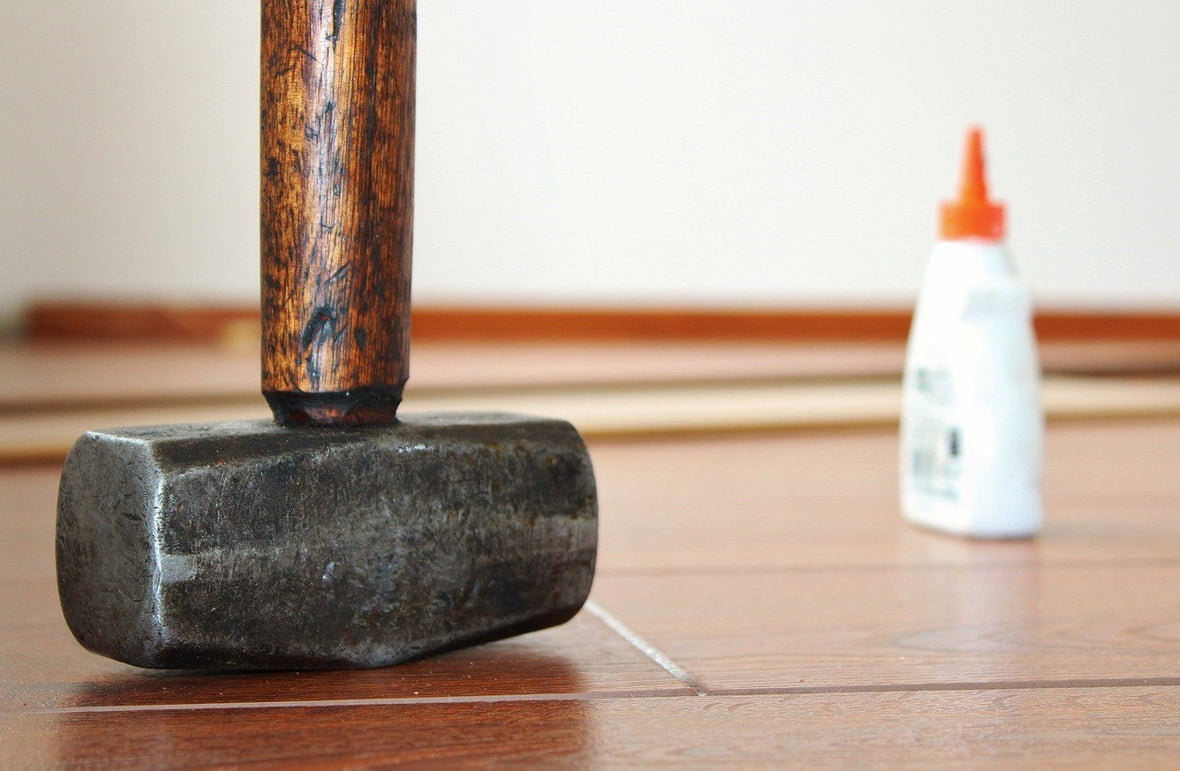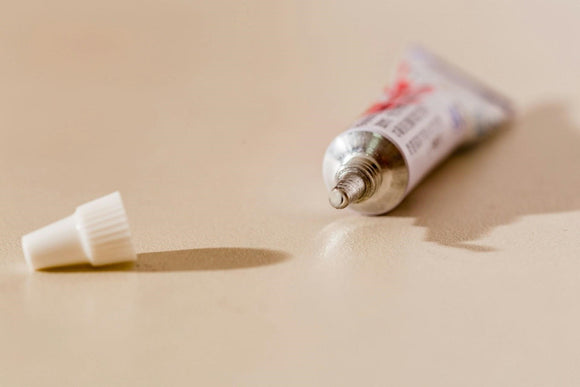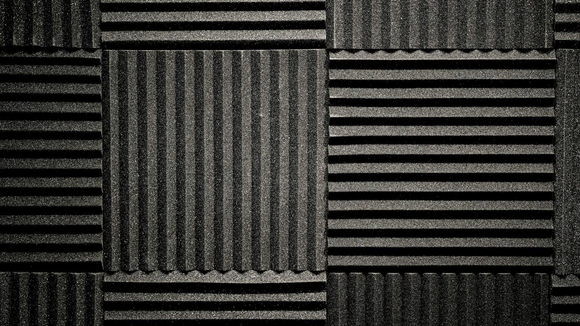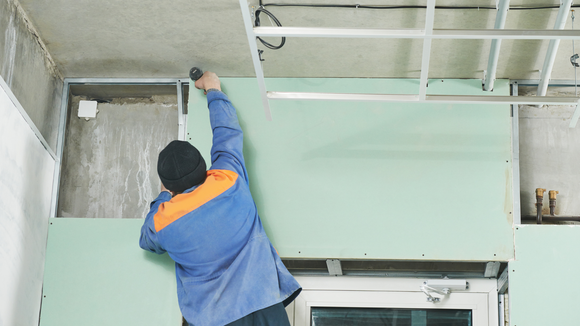
How to Choose the Right Adhesive for Stainless Steel Bonding
Tobias Johnson-Hulse
Bonding stainless steel can be challenging, but using the right adhesive for stainless steel ensures a strong hold without the need for welding or soldering. Stainless is a smooth, non-porous metal, so ordinary glues might not adhere well. There are many stainless steel glue options available, so how do you pick the most suitable one?
In this guide, we’ll discuss what makes the best glue for stainless steel and compare different types of glues. Whether you’re joining metal to metal (requiring a dedicated stainless steel to stainless steel adhesive) or bonding stainless to another material, understanding these products will help you find the best adhesive for stainless steel.
Factors to Consider in Stainless Steel Bonding
Before choosing an adhesive, consider the requirements of your stainless steel bonding task. First determine if you are bonding stainless steel to itself or to a different material (like plastic, wood, or glass). Some adhesives work better for metal-to-metal bonds, while others are formulated to bond metal to non-metal surfaces.
Also consider how much force will the bond need to withstand? For structural or load-bearing bonds, you’ll need a high-strength adhesive . For light-duty attachments or cosmetic fixes, a simpler solution like a cyanoacrylate (super glue) might suffice.

Also take into consideration whether the bonded item will be placed outdoors, exposed to weather or high heat? Epoxies generally have good heat and chemical resistance, while some other glues might degrade in harsh conditions. Choose adhesives labeled for the environment (for example, some construction adhesives and hybrids are formulated to resist water and temperature extremes).
Metals don’t flex much, but if the item will experience vibrations or differential expansion (say stainless steel attached to plastic in changing temperatures), a slightly flexible adhesive can absorb stresses. In such cases, a construction adhesive or MS polymer (hybrid sealant/adhesive) that remains a bit flexible could be a better choice than a rock-hard epoxy.
Types of Stainless Steel Adhesives
Several categories of adhesives are commonly used to bond stainless steel, so we have provided a quick guide to some of the most popular and effective solutions below, in order to pick the best adhesive for your stainless steel project:
Epoxy Adhesives – Strong and Durable
 Epoxy is often considered the go-to solution for stainless steel bonding in many situations. Epoxy adhesives come in two parts (resin and hardener) that you mix together. They cure into a very hard, thermoset plastic that can bond metal to metal or metal to other materials with excellent strength.
Epoxy is often considered the go-to solution for stainless steel bonding in many situations. Epoxy adhesives come in two parts (resin and hardener) that you mix together. They cure into a very hard, thermoset plastic that can bond metal to metal or metal to other materials with excellent strength.
● When to use epoxy: If you need a structural bond or are joining large stainless steel parts, epoxy is a top choice. For example, if you’re attaching stainless steel brackets or repairing a steel frame, a quality two-part epoxy provides a rigid, high-strength bond. Epoxies can often fill small gaps, which is useful if the metal surfaces aren’t perfectly flush.
● Tips: Epoxies designed for metal bonding are typically resistant to water, oils, and temperature fluctuations once fully cured. Some metal-filled epoxies (like steel-filled epoxy putties) can even be drilled or machined after curing. Ensure surfaces are clean (and slightly roughened if possible). Mix the epoxy according to instructions, apply an even layer, and clamp the pieces together.
Cyanoacrylate (Super Glue) – Quick Fixes

Cyanoacrylate glue, commonly known as super glue, is another option for bonding stainless steel, particularly for small or lightweight parts. Modern formulations of cyanoacrylate glue for metal often include special primers to help them adhere to smooth surfaces like stainless.
● When to use super glue: It’s best for quick, light-duty repairs. For example, if a small stainless steel knob or trim has come loose, a few drops of a high-quality super glue can reattach it. Hobbyists also use cyanoacrylate to bond stainless steel components in models or electronics. Keep in mind that it is extremely fast-setting, also that no mixing is required, making it easy to apply in small amounts.
● Tips: Surfaces must be very clean and oil-free, as cyanoacrylate bonds best to absolutely clean metals. Some stainless steels have very low surface reactivity (due to the chromium oxide layer), which can slow the curing of super glue.
Construction Adhesives and Polyurethane-Based Glues

For bonding stainless steel to other materials in building or DIY contexts, a construction adhesive can be useful. Construction adhesives (like those used for heavy-duty projects and available in caulking tubes) and polyurethane glues form strong bonds on a variety of surfaces, including metal.
● When to use: If you’re attaching stainless steel sheet or trim to a wall, floor, or piece of furniture, for instance, a construction adhesive provides a grab that holds the pieces together while curing. These adhesives are good for metal-to-wood or metal-to-concrete bonding.
● Tips: A product like Alien Glue is a 100% waterproof multipurpose adhesive that can bond metal, wood, ceramic, and more. This type of polyurethane-based glue could be used to bond stainless steel to various surfaces – it cures to a strong, water-resistant bond. Keep in mind that polyurethane glues usually expand as they cure, so you need to clamp the parts and wipe away excess foam before it hardens.
Acrylic Adhesives (MMA) – High Performance
Acrylic adhesives, particularly the two-part types known as MMA (methyl methacrylate adhesives), are often used in industry for metal bonding. These can be extremely strong – rivaling epoxies – and often have a bit more flexibility and a faster cure time. They are less commonly used by hobbyists or general consumers but worth mentioning.
● When to use: If you have a critical application (like bonding stainless steel hardware in marine or automotive use) and can get a hold of an acrylic adhesive system, this can be an excellent solution. Otherwise, for most DIY projects, epoxy will suffice, since consumer-grade acrylics are not as widely available.
● Tips: Very high strength bonds on stainless steel, often achieving structural bond strength in minutes. They can tolerate a bit of oily surface (some are formulated to work without perfect cleaning). Often slightly flexible when cured, so they resist impact and vibration well. Typically sold in specialized cartridges and require a mixing nozzle. Strong odor (MMA adhesives have a pungent smell). More expensive and have shorter shelf life.
Anaerobic Adhesives – For Threaded Stainless Parts

One special class of adhesives worth noting for stainless steel is anaerobic adhesives (like threadlockers, retaining compounds, and thread sealants). These only cure in the absence of air and presence of metal ions – typically used on screws, studs, and cylindrical joints.
● Use case: If your project involves fastening stainless steel parts with bolts or set screws, consider using a threadlocker to secure those threads. It’s not for bonding surfaces flush together, but it’s great at keeping threaded stainless components from vibrating loose.
● Tips: Threadlocking glue works on stainless steel bolts to prevent them from loosening. However, stainless steel is a passive metal – it doesn’t encourage anaerobic adhesive curing as well as plain steel. Specialized primers or grades of threadlocker (formulated for stainless or plated surfaces) may be needed for reliable curing on stainless threads.
Choosing the Right Adhesive for Your Project
To decide which adhesive to use for your stainless steel bonding job, match the adhesive’s strengths to your project’s needs:
● If you require the highest strength and can clamp parts: go with a two-part epoxy or acrylic adhesive.
● For quick household fixes or small parts: a drop of super glue might do the trick (with clean surfaces and maybe a spray of activator).
● For mixed material bonding (steel to wall, wood, or plastic) or larger surfaces: a construction adhesive or multipurpose hybrid (like a polyurethane glue) offers a convenient solution.
● If the pieces will face heat or chemicals: ensure the adhesive is rated for it (epoxies and certain high-performance acrylics are good here).
● For stainless screws or fasteners: use an anaerobic threadlocker in addition to mechanical tightening.
Finally, don’t hesitate to consult manufacturers’ recommendations or do a small test bond if possible. As a general rule, bonds between stainless steel parts benefit greatly from a bit of surface roughening and the use of a high-strength industrial glue like epoxy or MMA. For DIY projects, you can achieve excellent results with readily available products if you apply them correctly.


